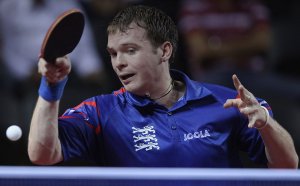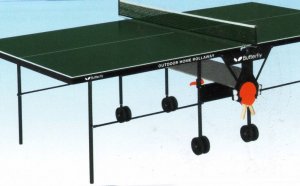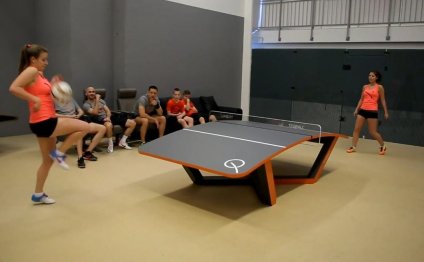
Rules to play Table Tennis
BASIC RULES OF TABLE TENNIS AS PER THE ITTF
The Table
The upper surface of the table, known as the playing surface, shall be rectangular, 2.74m long and 1.525m wide, and shall lie in a horizontal plane 76cm above the floor. The playing surface shall not include the vertical sides of the tabletop. The playing surface may be of any material and shall yield a uniform bounce of about 23cm when a standard ball is dropped on to it from a height of 30cm. The playing surface shall be uniformly dark coloured and matte, but with a white side line, 2cm wide, along each 2.74m edge and a white end line, 2cm wide, along each 1.525m edge. The playing surface shall be divided into 2 equal courts by a vertical net running parallel with the end lines, and shall be continuous over the whole area of each court. For doubles, each court shall be divided into 2 equal half-courts by a white centre line, 3mm wide, running parallel with the side lines; the centre line shall be regarded as part of each right half-court.
The Net Assembly
The net assembly shall consist of the net, its suspension and the supporting posts, including the clamps attaching them to the table. The net shall be suspended by a cord attached at each end to an upright post 15.25cm high, the outside limits of the post being 15.25cm outside the side line. The top of the net, along its whole length, shall be 15.25cm above the playing surface. The bottom of the net, along its whole length, shall be as close as possible to the playing surface and the ends of the net shall be attached to the supporting posts from top to bottom.
The Ball
The ball shall be spherical, with a diameter of 40mm. The ball shall weigh 2.7g. The ball shall be made of celluloid or similar plastics material and shall be white or orange, and matt.
The Racket
- The racket can be any size, shape or weight but the blade shall be flat and rigid.
- The surface covering material shall be matt and bright red on one side and black on the other.
- At least 85% of the blade thickness shall be of natural wood.
Definitions
- A rally is the period which the ball is in play.
- A let is a rally of which the result is not scored.
- A point is a rally of which the result is scored.
- The server is the player due to strike the ball first in the rally.
- The receiver is the player due to strike the ball second in a rally.
- The ball shall be regarded as passing over or around the net assembly if it passes anywhere other then between the net and the net post or between the net and the playing surface.
The Service
Service shall start with the ball resting freely on the open palm of the server's stationary free hand. The server shall then project the ball near vertically upwards, without imparting spin, so that it rises at least 16cm after leaving the palm of the free hand and then falls without touching anything before being struck. As the ball is falling the server shall strike it so that it touches first his or her court and then, after passing over or around the net assembly, touches directly the receiver's court; in doubles, the ball shall touch successively the right half court of server and receiver. From the start of service until it is struck, the ball shall be above the level of the playing surface and behind the server's end line, and it shall not be hidden from the receiver by the server or his or her doubles partner or by anything they wear or carry. As soon as the ball has been projected, the server’s free arm and hand shall be removed from the space between the ball and the net.
The space between the ball and the net is defined by the ball, the net and its indefinite upward extension. It is the responsibility of the player to serve so that the umpire or the assistant umpire can be satisfied that he or she complies with the requirements of the Laws, and either may decide that a service is incorrect. If either the umpire or the assistant umpire is not sure about the legality of a service he or she may, on the first occasion in a match, interrupt play and warn the server; but any subsequent service by that player or his or her doubles partner which is not clearly legal shall be considered incorrect. Exceptionally, the umpire may relax the requirements for a correct service where he or she is satisfied that compliance is prevented by physical disability.
The Return
The ball, having been served or returned shall be struck so that it passes over or around the net assembly and touches the opponents court, either directly or after touching the net assembly.
The Order of Play
In singles the server shall make a first service and the receiver shall make a return and thereafter alternately shall each make a return.
In doubles, the server shall first make a service, the receiver shall then make a return, the partner of the server shall then make a return, the partner of the receiver shall then make a return and thereafter each player in turn in that sequence shall make a return.
A Point
Unless the rally is a let, a player shall score a point
· if an opponent fails to make a correct service;
· if an opponent fails to make a correct return;
· if, after he or she has made a service or a return, the ball touches anything other than the net assembly before being struck by an opponent;
· if the ball passes over his or her court or beyond his or her end line without touching his or her court, after being struck by an opponent;
· if an opponent obstructs the ball;
· if an opponent deliberately strikes the ball twice in succession;
· if an opponent strikes the ball with a side of the racket blade whose surface does not comply with the requirements of 2.4.3, 2.4.4 and 2.4.5;
· if an opponent, or anything an opponent wears or carries, moves the playing surface;
· if an opponent, or anything an opponent wears or carries, touches the net assembly;
· if an opponent's free hand touches the playing surface;
· if a doubles opponent strikes the ball out of the sequence established by the first server and first receiver;
· as provided under the expedite system (2.15.4).
· if both players or pairs are in a wheelchair due to a physical disability and
· his or her opponent does not maintain a minimum contact with the seat or cushion(s), with the back of the thigh, when the ball is struck;
· his or her opponent touches the table with either hand before striking the ball;
· his or her opponent's footrest or foot touches the floor during play.
· as provided under the order of play (2.8.3).
A Game
A game shall be won by a player or pair first scoring 11 points unless both players or pairs score 10 points, when the game shall be won by the first player or pair subsequently gaining a lead of 2 points.
where to manage kindle unlimited how often is continuously why teaching is the hardest job how much teaching assistant earn uk what technology was made in 2020 where from your's teacher why science communication is important where to project voice how london buses work who devised the periodic table of elements how long system alcohol where startup folder in windows 8 how many design patterns are there in c# how much product to use in hair why management is important in business where to set up home office whose theory of development is best exemplified roadmap when do restaurants open london who started the great fire how often growth spurts how far science has come who studies science whose business is safety who teaching meaning in urdu where science meets beauty why management is important when design takes flight how much science should be taught in ks1 where is derby from london how long startup repair takes how product managers prioritize features how to teach teaching whu business psychology when manager is not supportive where is working solutions located whose project is 4ps tattoo designs why london is better than new york when business writers request information how many product searches start on amazon how long startup when management doesn't listen how to state a solution how many management consulting firms are there how far london to paris where to solve python problems who devised the trojan horse when science goes wrongRELATED VIDEO
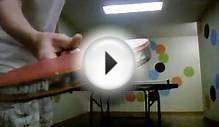
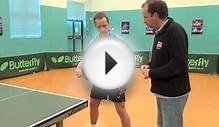
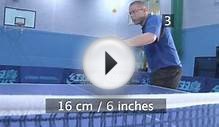
Share this Post
Related posts
British Table Tennis players
George Chester Barnes (born 27 January 1947) is a former English table tennis champion, who was England No. 1 player for…
Read MoreTips to play Table Tennis
10 Quick Tips To Better Table Tennis 1. Know what spin is on the ball. The key to acquiring this important skill is to carefully…
Read More
